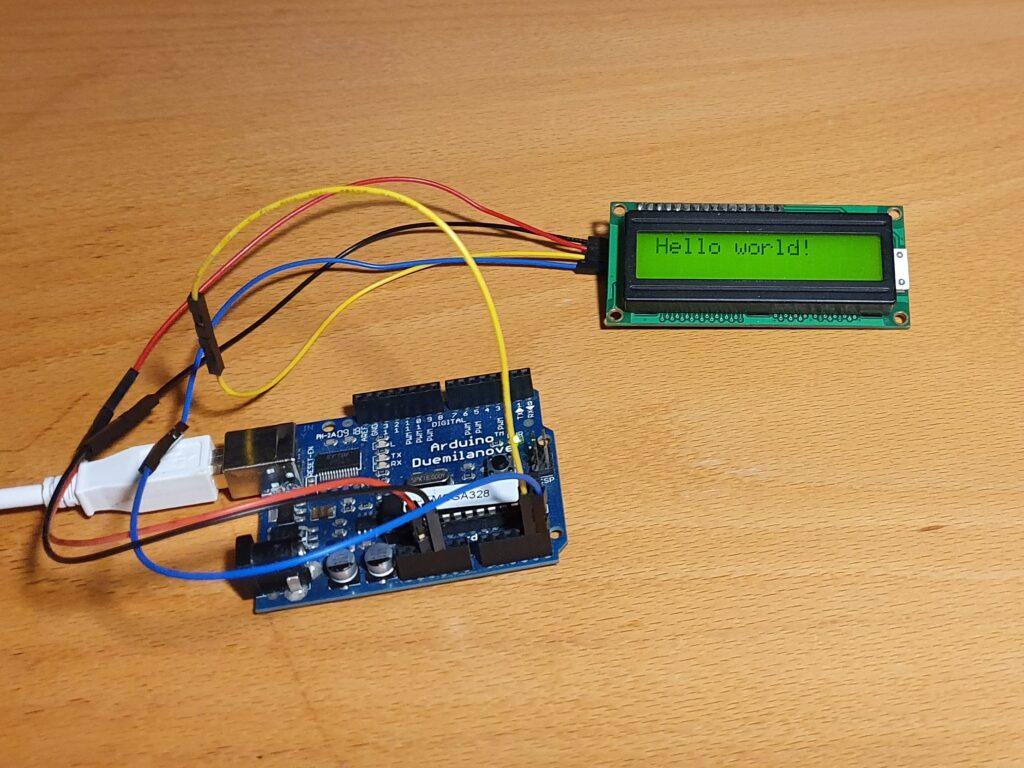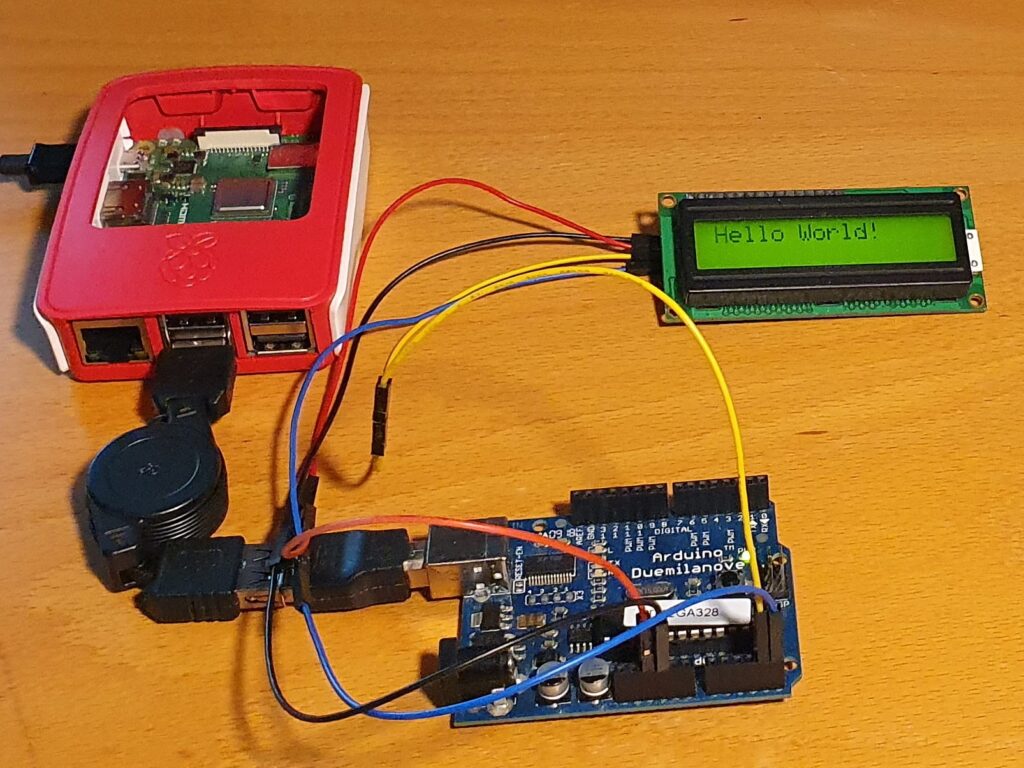Hello world!
The normal way:

Arduino->Display
// Arduino code
#include <Wire.h>
#include <LiquidCrystal_PCF8574.h>
LiquidCrystal_PCF8574 lcd(0x27);
void setup() {
Wire.begin();
Wire.beginTransmission(0x27);
lcd.begin(16, 2);
lcd.setBacklight(255);
lcd.home();
lcd.clear();
lcd.print("Hello world!");
}
void loop() {
// nothing to do here
}The overengineered way:

Raspberry Pi with Python script->USB->Arduino->Display
//Python script
import serial
import time
def main():
ser = serial.Serial("/dev/ttyUSB0", 9600)
time.sleep(2)
ser.write(('Hello world!\n').encode())
if __name__ == "__main__":
main()// Arduino code, with inspiration from Serial Event example code in Arduino IDE
#include <Wire.h>
#include <LiquidCrystal_PCF8574.h>
LiquidCrystal_PCF8574 lcd(0x27);
String inputString = "";
bool stringComplete = false;
void setup() {
Wire.begin();
Wire.beginTransmission(0x27);
lcd.begin(16, 2);
lcd.setBacklight(255);
Serial.begin(9600);
inputString.reserve(16);
lcd.home();
lcd.clear();
}
void loop() {
if (stringComplete) {
lcd.home();
lcd.clear();
lcd.print(inputString);
inputString = "";
stringComplete = false;
}
}
void serialEvent() {
while (Serial.available()) {
char inChar = (char)Serial.read();
if (inChar == '\n') {
stringComplete = true;
}else{
inputString += inChar;
}
}
}